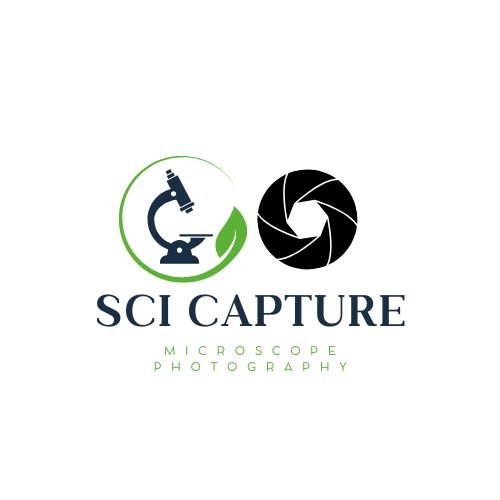Perfect phase contrast lighting begins with establishing Köhler illumination using a 10× objective. Center your condenser, align the phase annulus with the phase plate, and match the condenser aperture to your objective’s numerical aperture. Use green filters to minimize halos and enhance contrast. Adjust light intensity gradually and verify ring alignment when switching objectives. Regular calibration prevents shadowing and maintains crisp imaging. These fundamental adjustments will transform your microscopy results dramatically.
Establishing Köhler Illumination for Phase Contrast

When setting up phase contrast microscopy, you’ll need to start with proper Köhler illumination as your foundation.
Begin with a 10X objective lens to safely configure your system. Turn on your light source and raise the condenser to its maximum height for ideal light entry.
Close the field diaphragm to a pinhole, then use the centering telescope to align and center your condenser precisely. This alignment is critical for achieving uniform illumination across your specimen.
Next, adjust the condenser aperture diaphragm to match your objective’s numerical aperture—don’t close it too much or you’ll sacrifice resolution.
For true phase contrast microscopy, replace your standard eyepiece with the centering telescope to verify that your phase rings are properly superposed. This step guarantees the phase contrast effect works correctly.
Selecting the Optimal Phase Annulus for Your Specimen
With Köhler illumination properly established, your next task is selecting the correct phase annulus for your specimen. The annulus must match your objective lens’s numerical aperture to guarantee ideal phase contrast imaging. Choose Ph1 for thin specimens, Ph2 for medium thickness, and Ph3 for thicker samples.
Proper centering of the phase annulus is essential—misalignment with the phase plate in your objective will produce halo artifacts that obscure important details. When setting up, carefully adjust the annulus until it perfectly superposes with the phase plate.
You’ll see dramatic improvement in image quality when alignment is precise. Remember to verify your phase annulus alignment whenever you switch objectives. This regular calibration maintains consistent imaging quality and prevents subtle misalignments from compromising your observations.
Aligning Condenser and Phase Rings for Maximum Contrast

Proper alignment of the condenser’s phase annulus with the objective’s phase ring forms the foundation of successful phase contrast microscopy.
You’ll achieve this precision by using a centering telescope to superimpose both rings completely, ensuring Köhler illumination is established first with the aperture diaphragm fully open.
Verify your ring matching periodically during microscopy sessions, as even slight misalignments can greatly diminish contrast quality and compromise your imaging results.
Centering Phase Components
Achieving perfect phase contrast images depends critically on the precise alignment between your condenser annulus and the objective’s phase ring.
To properly center these components, you’ll need a centering telescope to observe the back focal plane of your phase contrast objective in the optical path.
For ideal alignment:
- Insert your phase contrast objective and focus on your specimen before adjusting illumination settings.
- Open the aperture diaphragm completely to better visualize the phase components.
- Use the centering keys to superpose the phase annulus and phase ring precisely.
Remember to repeat this centering procedure whenever you change objectives, as each has unique phase ring requirements.
Regular alignment checks help maintain consistent imaging quality and guarantee you’re getting the maximum contrast your microscope can deliver.
Kohler Illumination Alignment
While proper component alignment sets the stage for clear phase contrast imaging, Kohler illumination represents the gold standard for microscopy illumination that maximizes your contrast capabilities.
To achieve ideal phase shift and specimen detail, begin with your 10X phase contrast objective and fully open the aperture diaphragm.
For perfect alignment of your optical train, raise the condenser to its maximum height and close the field diaphragm to a pinhole.
Insert a centering telescope to view the back focal plane, then carefully align the condenser annulus with the objective’s phase ring using the centering keys. You’ll know you’ve achieved proper alignment when both rings are perfectly superposed.
Remember to repeat this procedure for each magnification objective you’ll use, ensuring each phase contrast microscope component is properly centered for your specific imaging needs.
Ring Matching Verification
Three critical elements must align perfectly for ideal phase contrast: your condenser annulus, the specimen, and the objective’s phase ring. Verifying this alignment is crucial for peak image quality in phase contrast microscopy.
To confirm proper ring matching:
- Insert a centering telescope into the eyepiece tube and focus on the back focal plane of your objective lens.
- Check that the dark phase annulus from the condenser perfectly superimposes with the bright phase ring in the objective.
- Make fine adjustments until both rings are concentrically aligned, confirming the numerical aperture of both components match.
Remember to verify this alignment whenever changing objectives. Misaligned rings dramatically reduce contrast and introduce unwanted artifacts.
Regular verification guarantees your phase contrast system consistently delivers the crisp, high-contrast images required for detailed specimen examination.
Filtering Light Wavelengths to Reduce Halo Artifacts

Because halo artifacts can considerably diminish the quality of phase contrast images, proper light wavelength filtration becomes essential for microscopy professionals. You’ll achieve excellent results by incorporating green filters in your illumination path, which create the ideal quarter-wavelength difference between direct and diffracted beams.
| Filter Type | Effect on Halo Artifacts |
|---|---|
| Green Filter | Minimizes halos, enhances phase difference |
| Bandpass Filter | Selectively transmits beneficial wavelengths |
| Narrow Wavelength | Enhances contrast, reduces halo visibility |
| Monochromatic Source | Provides consistent imaging, reduces artifacts |
Don’t overlook the importance of regularly checking your optical components’ alignment. Proper centering of the phase annulus relative to phase plates will further reduce unwanted halos, complementing your wavelength filtration efforts for clearer phase contrast microscopy.
Fine-tuning Light Intensity for Detail Preservation
Achieving ideal detail in phase contrast microscopy depends critically on proper light intensity management. You’ll need to adjust illumination gradually rather than overwhelming your specimen with excessive brightness that can mask fine structures.
Employ Köhler illumination to guarantee uniform light distribution across your entire field of view.
For peak detail preservation in phase contrast microscopy:
- Insert a neutral density filter to reduce light intensity while maintaining image clarity and enhancing visualization of delicate structures.
- Align your condenser aperture diaphragm with the objective’s numerical aperture to achieve balanced illumination.
- Continuously observe your specimen while making light adjustments, guaranteeing delicate features remain visible without being washed out.
This contrast technique requires finding the perfect balance between illumination and detail—too much light obscures subtleties, while insufficient lighting renders structures invisible.
Centering Your Light Source for Even Illumination

Proper alignment of your microscope’s light source creates the foundation for revealing clear cellular details without distracting shadows or uneven brightness.
You’ll need to carefully center both the phase annulus and objective phase plate using a centering telescope, ensuring the illumination rings perfectly overlap for ideal contrast.
Adjusting the distance between your light source and condenser not only fine-tunes intensity but also eliminates shadow distortion that can obscure critical specimen features.
Alignment Techniques Matter
While many microscopists focus on sample preparation, precise alignment of your light source forms the foundation of successful phase contrast microscopy.
Using a centering telescope is essential for properly aligning the phase annulus with the phase plate in your objective.
To achieve ideal alignment:
- Focus on your specimen with your phase contrast objective (10X works well) and fully open the aperture diaphragm to visualize the back focal plane.
- Use the centering keys to adjust the illumination ring until perfectly aligned with the phase plate.
- Replace the centering telescope with your standard eyepiece and verify consistency across different magnification objectives.
Remember to check your alignment regularly as even slight misalignments can dramatically reduce contrast and introduce unwanted optical artifacts.
Your imaging quality depends directly on maintaining this critical superposition of optical elements.
Distance Adjusts Intensity
Once you’ve aligned your phase annulus with the phase plate, the next critical factor becomes your light source’s position relative to the condenser. The distance between these components directly impacts illumination intensity across your specimen.
Moving your light source closer to the condenser increases overall brightness, which can be beneficial for dense specimens requiring greater illumination. Remember that proper alignment remains essential even when adjusting distance—misaligned components create uneven lighting that compromises image quality.
You’ll achieve ideal phase contrast by regularly checking your setup with a centering telescope. This helps guarantee the phase annulus remains perfectly aligned with the light source despite any distance adjustments.
Additionally, fine-tune your condenser height to enhance the light path for maximum contrast. These small adjustments make significant differences in your microscopy results.
Eliminate Shadow Distortion
Centering your light source properly forms the foundation of shadow-free phase contrast imaging.
When your phase annulus in the condenser isn’t perfectly aligned with the objective phase plate, you’ll notice distracting shadows that obscure transparent specimens. Use a centering telescope to visualize the back focal plane and make precise adjustments.
For best results:
- Start with a lower magnification (10X) objective to make initial centering easier before progressing to higher powers.
- Use the centering keys to superpose the illumination ring precisely over the phase plate until they’re perfectly aligned.
- Repeat this alignment process for each objective lens you’re using, as different magnifications require individual adjustments.
Regular alignment checks prevent uneven illumination and guarantee your light microscope delivers the crisp contrast and shadow-free images needed for detailed observation.
Managing Condenser Aperture for Depth of Field Control

Because the condenser aperture directly influences image quality, its proper adjustment stands as one of the most critical aspects of phase contrast microscopy. You’ll need to match the aperture setting with your objective’s numerical aperture to achieve maximum resolution when viewing transparent specimens.
| Aperture Setting | Effect on Image | Best Use Case |
|---|---|---|
| Wide Open | High brightness, decreased resolution | Low magnification scanning |
| Medium | Balanced contrast, good resolution | Routine observations |
| Narrow | Enhanced detail, reduced brightness | High-resolution analysis |
Don’t close the aperture too much—this causes stray light from the objective edges to reduce contrast. Check your condenser position regularly to maintain proper alignment with phase rings. By thoughtfully balancing these settings, you’ll control both depth of field and image clarity for superior phase contrast results.
Troubleshooting Common Phase Contrast Lighting Issues
Even the most meticulously aligned phase contrast microscope can develop lighting issues that compromise your specimen visibility.
When troubleshooting, focus on these core alignment problems:
- Halo artifacts and reduced contrast – Use your centering telescope to verify proper superposition of illumination rings. Check that your phase annulus and phase plate are correctly centered to prevent contrast degradation.
- Poor specimen detail resolution – Adjust your aperture diaphragm to match the numerical aperture of your objective. Incorrect settings directly impact resolution quality and structural definition.
- Excessive halos around specimens – If persistent halos obscure cellular details, consider modifying your condenser height or switching to a different phase contrast objective with better halo control.
Regular alignment checks prevent gradual deterioration of image quality that you mightn’t immediately notice during routine observations.
Frequently Asked Questions
How to Set up Phase Contrast?
You’ll insert a phase contrast objective, focus on your specimen, align the illumination ring using a centering telescope, then view through regular eyepieces. Repeat for different objectives and check alignment regularly.
How Do You Get a Good Image Under Phase Contrast Microscope?
You’ll get good phase contrast images by aligning the condenser and objectives with a centering telescope, using Köhler illumination, selecting matching Ph objectives, focusing on thin specimens, and maintaining your microscope regularly.
What Are Three Ways to Improve Contrast of a Specimen?
You’ll improve specimen contrast by properly aligning phase rings with condenser annuli, using Köhler illumination for even lighting, and adding a green filter to reduce halos and enhance detail visibility.
How Do You Prepare for a Phase Contrast Slide?
You’ll need to select a thin specimen (5-10μm), use proper mounting media, and guarantee your slide is clean. Don’t add stain, as phase contrast works best with unstained, transparent samples.
In Summary
You’ve now mastered the essentials of perfect phase contrast lighting. Remember, proper alignment of your phase rings and condenser is critical for ideal results. Don’t neglect regular maintenance and calibration of your system. With these techniques, you’ll consistently produce crisp, high-contrast images with minimal artifacts. When issues arise, return to these fundamentals—most problems stem from basic alignment and illumination adjustments.





Leave a Reply